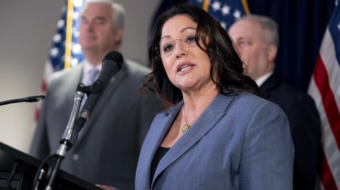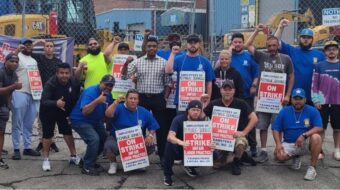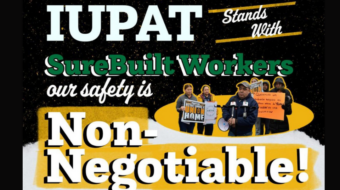There is a tendency among U.S. trade union leaders, shop stewards and rank-and-file activists to strongly distrust federal and state agencies charged with protecting workers’ health and safety — and therefore not to utilize them.
While there are good grounds for suspecting government agencies of anti-worker bias and wrongdoing, there are also ample reasons for not allowing big employers and right-wing political officials to destroy the Occupational Safety and Health Administration and its counterparts on the state level.
The golden period of OSHA was in the late 1970s. During those years, the agency aggressively sought to enforce its rules and regulations. Around the same time, the National Institute for Occupational Safety and Health (NIOSH), responding to mass pressure, recommended additional proposals to protect workers on the job.
Unions were very involved in the development of these proposals. And when OSHA was doing its work properly, labor unions had another tool to protect their members from the ravages of asbestos, lead, industrial solvents and many other hazards.
But starting with the election of Ronald Reagan, 12 years of Republican rule dealt OSHA and NIOSH punishing blows. The Reagan and first Bush administrations stripped OSHA of many of its powers and forced NIOSH to use corporate-paid researchers to write occupational safety and health rules. Labor was removed from any policy-making positions. State agencies were weakened, too.
The Clinton years restored some muscle to OSHA and NIOSH, but now, after eight years of George W. Bush’s rule, the credibility of the two agencies is almost completely shot.
It’s with this background in mind that one should assess the recent victory of the Unite Here union, which represents garment and hotel workers, in winning an OSHA-ordered $2.8 million fine against Cintas, the giant laundry company. Unite Here has been trying to organize the workers at Cintas for several years now.
The penalty stems from an incident last March, when Eleazar Torres Gomez, a 46-year-old Cintas worker, was killed in an accident at the company’s Tulsa, Okla., plant. Torres Gomez was caught on a conveyor belt used to transfer uniforms from washers to dryers, and he died inside a 300-degree dryer. The company said it was his own fault.
In response to this incident, Unite Here’s staff and activists directed their organizing power against Cintas nationwide. They went to OSHA and demanded it take action. They believed that within OSHA, below the Bush-appointed, anti-worker leadership, some civil servants wanted to do their jobs. And they were correct.
In short order, Cintas’ plants in Oklahoma, Alabama, Ohio, Washington, California and Pennsylvania were subjected to OSHA inspections. The net result was the multimillion-dollar fine against the company in the Tulsa case and additional fines for safety violations elsewhere.
The Bureau of Labor Statistics, whose statistics are not completely reliable, nonetheless offers some comparative data about the dangers facing laundry workers. Laundry and dry-cleaning workers have an injury rate of between 6.7 and 9.3 per 100 full-time workers. By comparison, the injury rate of chemical workers is 3.7, oil and gas well workers, 6.7, and forestry and logging workers, 9.9. In other words, commercial laundering is a very unsafe industry.
The highly profitable laundry and linen supply industry has grown into one of the largest industries in the United States. Why? Because of the outsourcing of the laundry function by hotels, hospitals and nursing homes.
Boosting the bottom line also is the companies’ policy of employing the most vulnerable workers, including undocumented immigrants, at low wages with few benefits.
Whether the fines that OSHA has levied against Cintas will be paid, or whether this episode will boost the union organizing drive by Unite Here, is still unknown. We are hoping the answer is yes on both counts.
What is not open to question is the valuable role that federal and state governments can play in holding scofflaw employers’ feet to the fire. Regardless of how “friendly” an employer may be at any given time, it is still vital to have a strong, effective OSHA administration ready to be called into the picture if it is needed to curb the greedy actions of the company.
We need to rearm OSHA and NIOSH with strong enforcement powers, with labor unions to back them up. Keep that thought in mind as we approach the 2008 elections.









